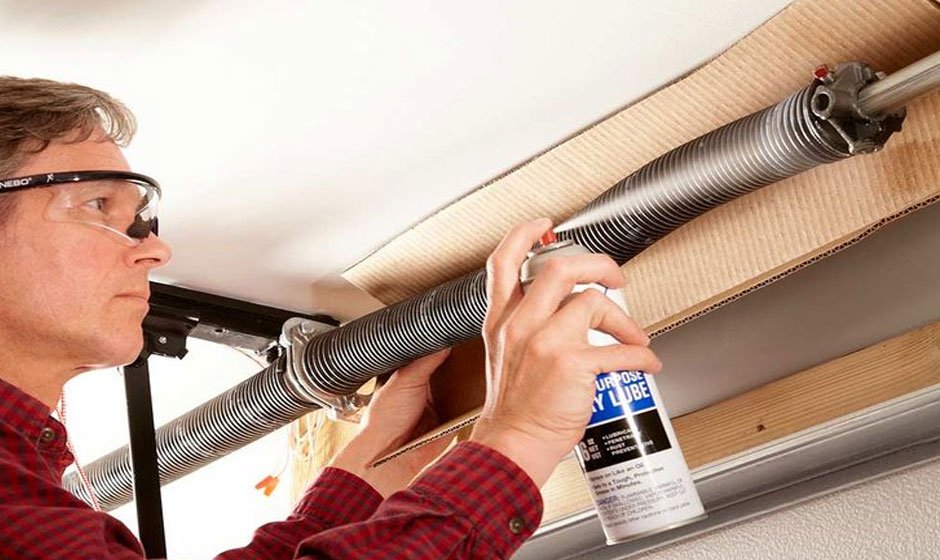A garage door is not only a functional component of a home but also a paramount one. Proper maintenance ensures the door’s smooth operation, security, and longevity. Regular upkeep can stem costly repairs and enhance the safety of your property. We’ll explore the key maintenance tasks that should be accomplished on a garage door to preserve it in optimal condition.
Key maintenance tasks for garage doors
1. Lubrication of Moving Parts
Lubricating the moving parts of a garage door is one of the simplest yet most effective maintenance tasks. Hinges, rollers, tracks, and springs should be lubricated periodically to reduce friction and ensure smooth operation. A silicone-based lubricant is recommended as it doesn’t attract dirt or debris that can clog the mechanisms. Regular lubrication prevents wear and tear and minimizes noise associated with the door’s movement.
2. Inspection of Hardware
Regularly inspecting the hardware of your garage door is essential for identifying any signs of wear or damage. Check the springs, cables, rollers, and hinges for rust, fraying, or bending. Damaged hardware can compromise the door’s functionality and pose safety risks. If you notice any issues, you should promptly address them by replacing the damaged parts or seeking professional assistance.
3. Balance and Alignment Checks
A well-balanced garage door is crucial for smooth operation and to prevent strain on the opener. Disconnect the opener and manually lift the door halfway to check the balance. If the door stays positioned, it’s appropriately balanced; adjustment is needed if it moves up or down. Imbalanced doors can lead to premature wear of the opener and other components. Similarly, check the door’s alignment by inspecting the tracks for gaps, bends, or misalignments.
4. Weatherstripping Maintenance
Weatherstripping helps keep your garage insulated and prevents drafts, pests, and debris from entering. Over time, weatherstripping can become brittle or damaged, compromising its effectiveness. Regularly inspect the weatherstripping around the sides and bottom of the door and replace it if necessary. Properly maintained weatherstripping improves energy efficiency and protects your garage from external elements.
5. Opener System Inspection
The garage door opener is a critical component of the door’s functionality. Test the safety features of the opener system, including the auto-reverse mechanism. Place an object in the door’s path and attempt to close it; if the door doesn’t reverse upon contact, the opener’s safety sensors need adjustment or replacement. Also, ensure that the opener’s remote control and keypad function correctly.
6. Cleaning and Paint Touch-Ups
Regular cleaning of the garage door helps maintain its appearance and prevents the accumulation of dirt, dust, and grime. Use a mild detergent and water to clean the door’s surface, and sidestep using harsh chemicals that could damage the finish. Additionally, inspect the door’s paint or coating for signs of peeling or fading. Touch any area with paint to protect the door from rust and maintain its aesthetic appeal.
7. Tightening Loose Hardware
Vibrations and regular use can cause nuts, bolts, and screws to become loose over time. Periodically check and tighten all hardware connections, including those on the tracks, hinges, rollers, and brackets. Loose hardware affects the door’s operation and can lead to more significant issues if left unattended.
8. Track Cleaning and Alignment
The tracks guide the garage door as it opens and closes. Inspect the tracks for any dirt, debris, or obstructions hindering the door’s movement. Clean the tracks with a damp cloth and ensure they are properly aligned. Misaligned tracks can cause the door to bind or become stuck during operation. Use a level to check the alignment and adjust the tracks if needed.
9. Regular Painting and Rust Prevention
If your garage door is made of metal, rust can be a significant concern, especially in areas with high humidity or salt exposure. Regularly inspect the door for signs of rust and address it promptly by sanding the affected area, applying a rust converter, and painting over it. Applying a fresh coat of paint enhances the door’s appearance and protects against rust and corrosion.
10. Professional Inspection
While homeowners can accomplish many maintenance tasks, scheduling regular professional inspections for your garage door is essential. Experienced technicians have the expertise to pinpoint potential issues that might not be noticeable to the untrained eye. A comprehensive assessment can help catch problems early, stem costly repairs, and ensure the safety of your garage door.
Maintaining your garage door goes beyond ensuring its smooth operation; it’s about safeguarding your property, enhancing security, and extending the door’s lifespan. From lubrication and hardware checks to weatherstripping maintenance and professional inspections from a company such as Metro Garage Door Repair LLC, these tasks collectively contribute to your garage door’s proper functioning and longevity. Regular maintenance prevents costly repairs and provides peace of mind, knowing that your garage door is functioning optimally and keeping your property secure.

